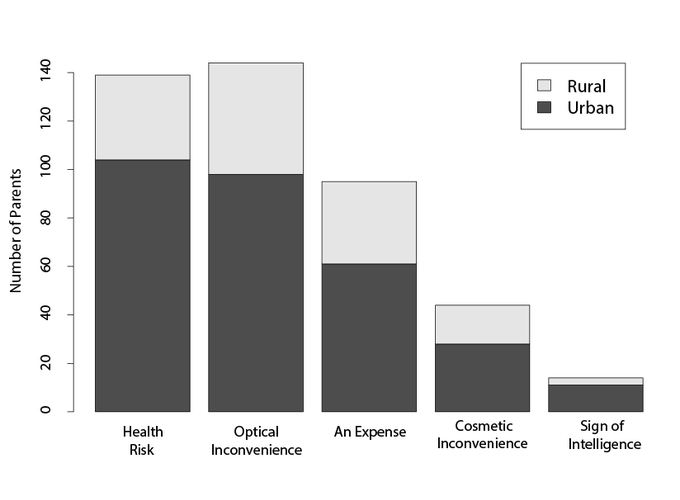Abstract
PURPOSE:With the increasing prevalence in myopia there is growing interest in active myopia prevention. This study aims to increase our understanding of parental attitudes to myopia development and control, as a means to inform future health planning and policy. It evaluates, for the first time, the attitude of parents to myopia and its associated risks, as well as assessing the exposure of Irish children to environmental factors that may influence their risk profile for myopia development. METHODS: Parents of 8-13 year old children in eight participating schools completed a questionnaire designed to assess their knowledge of and attitudes towards myopia and its risk factors. A structured diary was also used to capture daily activities of children in relation to myopia risk factors. RESULTS: Of 329 parents, just 46% considered that myopia presented a health risk to their children, while an identical number (46%) regarded it as an optical inconvenience. Myopia was also, but less frequently, considered an expense (31% of parents), a cosmetic inconvenience (14% of parents) and, by some, as a sign of intelligence (4% of parents) 76% of parents recognised the potential of digital technology to impact the eye, particularly as a cause of eyestrain and need for spectacles. Only 14% of parents expressed concern should their child be diagnosed with myopia. Compared to non myopic parents, myopic parents viewed myopia as more of an optical inconvenience (p < 0.001), an expense (p < 0.005) and a cosmetic inconvenience (p < 0.001). There was a trend for myopic parents to limit screen time use in their household more than non-myopic parents (p = 0.05). Parents who considered myopia a health risk sought to limit screen time more than parents who did not regard myopia as a health risk to their child (p = 0.01). Children spent significantly longer performing indoor proximal tasks (255 min) compared to time spent outdoors (180 min; p < 0.0001) daily. Older (p = 0.001), urban (p = 0.0005) myopic (=0.04) children spent significantly more time at digital screens compared to younger non-myopic children from a rural background. CONCLUSION: Parental attitudes to myopia were typically nonchalant in relation to health risk. This is of particular concern given the impact parents have on children’s behaviour and choices with respect to such risk factors, demonstrating an acute need for societal sensitisation to the public health importance of myopia.
